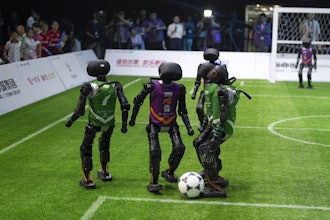
It’s true. Global supply chain compression has proven problematic in countless ways, and shortages have driven demand to record levels in nearly every goods and services category, including maintenance services. People are trying to figure out how to make their equipment last longer, knowing it could be months before they can expand fleets or replace aging assets. Manufacturers are also trying to do more with less – and make their technology investments last longer than usual.
But unlike those further downstream, manufacturers don’t have the luxury of stretching their legacy infrastructure or operating models to the brink. The technology systems they’ve relied on for decades are not compatible with the production, warehousing and logistics strategies they must employ now to meet demand. They are the starting point of every supply chain.
If they can’t figure out how to increase output amidst growing labor shortages or remain compliant with strict customer and regulatory requirements, the consequences could be more disruptive to economies than what we’ve seen thus far. That’s why I expect manufacturers to show renewed interest in machine vision in 2022 – especially those in sectors that are core to our everyday lives, such as automotive, medical device, pharmaceutical, electronics, food and beverage, and consumer packaged goods (CPG) producers.
Revisiting the Past to Reinvent the Future
Though a groundbreaking mid-century innovation, complacency with the complexity of its design rendered machine vision a technical band-aid, versus a simple solution, by the early 2000s. Only those manufacturers fortunate enough to have highly skilled camera operators and data scientists on staff benefitted. As a result, many had written off machine vision as a viable way to track and trace goods, conduct quality inspections, and ensure compliance with customer and regulatory standards – even though it remains one of the best ways to this day.
But we’ve reached a tipping point in the industrial sector – one that’s forcing manufacturers to reconsider technologies they once may have considered overkill or too complex, including machine vision.
Fortunately, the lessons learned in the past have been applied during recent system redesigns, so the risk of deriving the same outcome is low. If anything, industrial engineers and operations managers should raise their expectations moving forward.
Everything from the smart cameras and sensors to the image analysis software has been thoughtfully updated to ensure anyone can operate, manage and upgrade machine vision platforms without specialized training. In addition, many platforms have recently been built as dual function solutions: able to serve as both imagers and barcode scanners, extending their flexibility and increasing their value.
They can be strategically positioned on and off lines to verify each asset’s status as it moves about facilities. The sheer amount of data that can be instantly extracted, analyzed and distributed is remarkable. These aren’t your father’s machine vision systems.
Therefore, I predict the fundamental infrastructure changes introduced into machine vision systems in 2021 will instill greater comfort and confidence among industrial engineers and IT leaders. I foresee them justifying several business cases for machine vision in 2022 - for both known and novelty use cases – and putting the technology back to work.
Beyond Track and Trace
Though the value proposition for track and trace applications is becoming clear for inventory management, quality control, and accountability purposes, plant engineers and operations managers will be calculating new ways to leverage machine vision beyond the shop floor. Manufacturers must work with suppliers to refine internal supply chains if they want to get raw materials in and quality products out in a high-yield manner. This means the following should become more popular in 2022:
- Overhead scanning applications – moving from handheld to handsfree workflows – will become more relevant to manufacturers, especially in warehouses. They could see a significant efficiency improvement just by using smart cameras and sensors to track items as they move from point to point.
- Furthermore, the integration of cloud storage options into modern machine vision technologies will open the door to new applications, which is good news since the problems challenging supply chains are even bigger than track and trace, process control and quality inspection.
- I strongly believe 2022 will also be the year industrial engineers embrace deep learning. Just as they don’t have time to teach new workers how to operate machine vision systems, they don’t have time to train machine vision intelligence on what is right or wrong. They need systems that can learn by example and become self-sufficient so that workers, too, can become more self-sufficient and confident in their actions.
- We will see decision automation become a byproduct of machine vision in the coming year, as it will remove the burden from workers to make the right call based on the limited information they may have. No one wants to be held liable for missing a quality issue that leads to a recall or miscalculating the material quantity needed for the next production run.
In other words, machine vision will finally produce the outcomes manufacturers have always targeted – if technology decision-makers are willing to give it a second chance.
To learn more about how modern machine vision systems are benefiting manufacturers, click here.




















